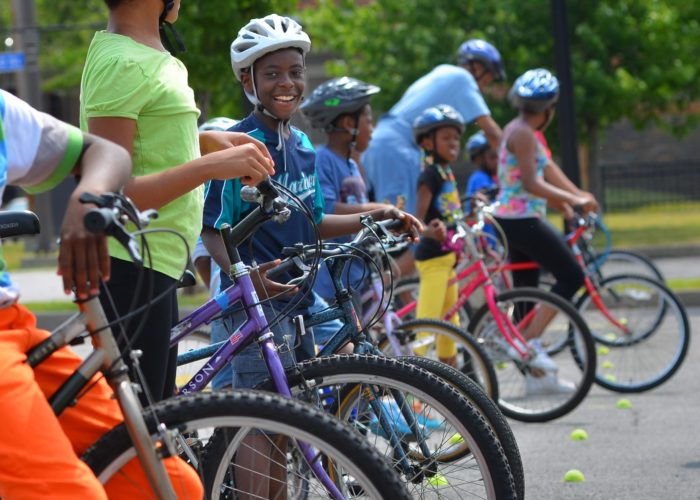Cited Research
Walk! Bike! Fun! (WBF) is a proven Education strategy of Safe Routes to School (SRTS). Both WBF and SRTS are great and essential for students for a variety of reasons that has been well documented nationally and internationally. If you need more information, we have some documentation below.

Relevant Research
In a study of 18 states, Safe Routes to School programs were associated with a 14-16% decline in pedestrian and bicyclist injury risk and a 13% decline in pedestrian and bicyclist fatality rate (DiMaggio et al., 2016).
Children who walk or cycle to school rather than being driven by their parents have an increased power of concentration, and the effect of this ‘exercise’ lasts all morning (Egelund, 2012).
Physical activity before, during and after school promotes scholastic performance in children and youth. Mastery of fundamental movement skills is beneficial to cognition and scholastic performance in children and youth (the Guardian, 2016).
Black and Latino people are twice as likely to be killed while walking (Maciag, 2014).
Black people are 30% more likely to be killed biking, and Latino people are 23% more likely to be killed biking (League of American Bicyclists, 2013).
A recent study of near misses in the United Kingdom has revealed that bicycling speed is the main factor affecting near miss rates (incidents that don’t result in injuries but still are scary, annoying, and/or stressful). Women, who tend to bike more slowly than men do, experience higher rates of near misses than men, which can factor into and perpetuate the gender gap in bicycling. This underscores the importance of quality, safe bicycling infrastructure, particularly for more vulnerable groups (Aldred, 2016).
People of racial/ethnic minorities and people of lower socioeconomic status in the US are systematically linked to higher exposure to traffic and related health risks (i.e., air pollution, noise pollution, traffic injuries and fatalities, etc.) (Rosenlieb et al., 2018).
Barriers to children’s pedestrian safety include longer block lengths, missing sidewalks, crosswalk density, and commercial land uses around schools. The lack of sidewalks and well-designed crosswalks puts children of lower socioeconomic backgrounds at greater risk of pedestrian crashes (Hwang et al., 2017).
Cardiorespiratory fitness and weight status have been independently connected with academic achievement, cognition, and behavior (Sardinha et al., 2014; Davis and Cooper, 2011).
After adding physical activity to school curriculum, students performed 6% better on standardized tests than peers learning the same material in seated, inactive sessions (Donnelly and Lambourne, 2011).
Active commuting was correlated with higher cognitive performance on verbal, reasoning, and numerical tests among adolescent girls (Martinez-Gomez, 2011).
Regular participation in physical activity and higher levels of physical fitness have been linked to improved academic performance and brain function, including attention and memory (Castelli et al., 2015).
Specific to Safe Routes to School, introducing a program focused on education and encouragement increased bicycling to school by 5 percent each year. When programs also incorporated infrastructure improvements like sidewalks, crosswalks and covered bicycle parking, the rate of bicycling and walking improved to between 5 percent and 20 percent (McDonald, 2013).
State-funded Safe Routes to School projects are increasing active school travel: In a study of four states (Florida, Mississippi, Washington, and Wisconsin) after the implementation of Safe Routes to School projects, walking to/from school increased from 9.8% to 14.2%, and bicycling to/from school increased from 2.5% to 3%. Active school travel increased overall from 12.9% to 17.6% (Stewart et al., 2014).
There is a strong correlation between traffic calming measures (such as intersection density, medians/dividers, low mobility streets) and increased elementary school children walking and biking to school (Nicholson et al., 2014). Best practices for improving pedestrian safety around schools include building a low-speed road environment over two miles away from highways with less car-centric commercial use and more sidewalk coverage, especially around transit stops (Yu et al., 2016).
